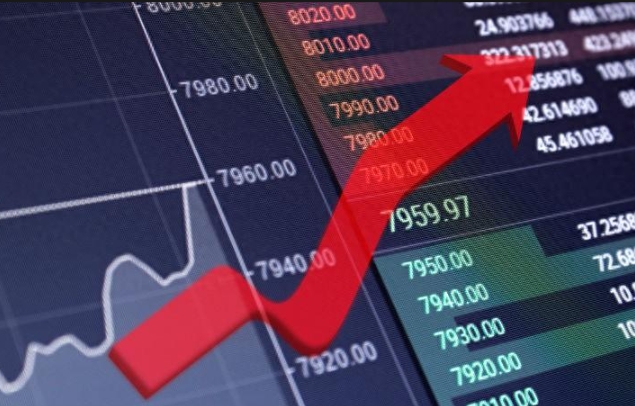- Financial Blogs
- December 14, 2024
- Comments(224)
Bullish Outlook for U.S. Stocks Ahead of Year-End
Advertisements
The countdown to the end of 2024's trading days in the U.S. stock market is on, with only 18 days left for investors to act on their year-end strategies. As the festive season nears, the question lingers: will we witness one more surge in stock prices?
Throughout this year, the U.S. equity market has seen remarkable activity, reaching an astonishing 55 all-time highs so far. Scott Rubner, a notable expert on capital flows at Goldman Sachs, emphasizes that we are on the brink of the 56th high. His latest report to clients suggests that the market is poised for a notable influx of capital as retail investors return from their Thanksgiving hiatus. This resurgence, coupled with a robust demand for corporate stock buybacks and lower market volatility, creates an environment ripe for another upward movement. In fact, data shows that in the last 11 trading days, stock prices have increased 10 times.
Rubner notes, "My seasonal cash flow meter is revving up, and the year-end FOMO (Fear of Missing Out) is kicking in." With eager investors vying for a place in the anticipated rally, here are the seven vital dynamics expected to shape the close of the stock market in 2024.
Firstly, historical patterns of strong seasonal performance are noteworthy. Since 1928, the S&P 500's median monthly return in December stands at 2.04%, often seen during the latter half of the month amidst low liquidity trading conditions. This phenomenon is popularly termed the "December Effect." Further, the "January Effect" suggests a surge in market inflows in the weeks following the New Year as significant capital enters the market. Historical data implies that since 1928, the combined median monthly returns for December and January are approximately 3.83%. Post the January Effect, Goldman anticipates a bearish outlook by mid-January based on emerging trends.
Secondly, the sheer scale of capital inflow into U.S. stocks has reached record-breaking levels. According to Rubner, buyers currently outnumber sellers, which has led to a remarkable $141.08 billion influx into the market over the past month—setting a new high for monthly capital inflows. In contrast, $8 billion flowed out from stocks and funds outside the U.S. during this same period, highlighting the comparative strength of the domestic market.
Another critical factor is the rise of passive investment funds, which have garnered $589.4 billion in inflows this year, while actively managed funds saw $210.2 billion in outflows. Over the last decade, passive funds accumulated approximately $2.8 trillion, whereas active funds suffered a total outflow of $3 trillion, marking a net loss of $200 billion—a significant shift in investment dynamics.
Next in line is the anticipated strong demand for stock buybacks which will be in effect until December 20. Historically, November and December are two months characterized by a peak in corporate stock repurchases. This year, authorized corporate buybacks have surged to $1.14 trillion, a 17% increase compared to the same period in 2023. Goldman predicts that by 2025, total repurchases could hit approximately $1.07 trillion. Rubner points out, "Are stock certificates a scarce resource? Absolutely." The logic follows that as corporations execute buybacks, the resulting scarcity could lead to a value increase in remaining shares.

Looking into market volatility, Rubner has observed that market makers are holding an unprecedented gamma position, valued at about $10 billion for every 1% market move. This level of exposure may cushion against market weaknesses. Additionally, the VIX index, a measure of market volatility, has reached its lowest point since July, resting at 13.09. If no significant shocks occur in the coming weeks, there's an expectation that demand from market participants will moderately increase against a backdrop of limited supply.
The reintegration of retail investors into the market post-Thanksgiving is another sign of market vitality, with Goldman Sachs' Equity Panic Index falling to new lows alongside historic highs in call option trading. "I find myself checking Reddit each morning to see the latest trending stocks," Rubner mentions, reflecting the active involvement of everyday investors in current market dialogues.
Lastly, while liquidity levels are currently favorable—evidenced by a top book liquidity measure of $21 million, the highest in six months—Rubner cautions that liquidity tends to dip in the last two weeks of the year. Such fluctuations may result in increased market volatility and more pronounced trading impacts in the immediate future.
As the remaining trading days dwindle, participants in the U.S. stock market are left analyzing trends and navigating through the complexities of market sentiment, seasonal behaviors, and corporate actions. For investors, these next few weeks could hold the keys to maximizing year-end returns, but what's certain is that activity around stocks will heighten as speculation and strategies unfold amidst the holiday season. What lies ahead remains to be seen, but the current teeming landscape marks a pivotal chapter in a year already filled with unprecedented flux.